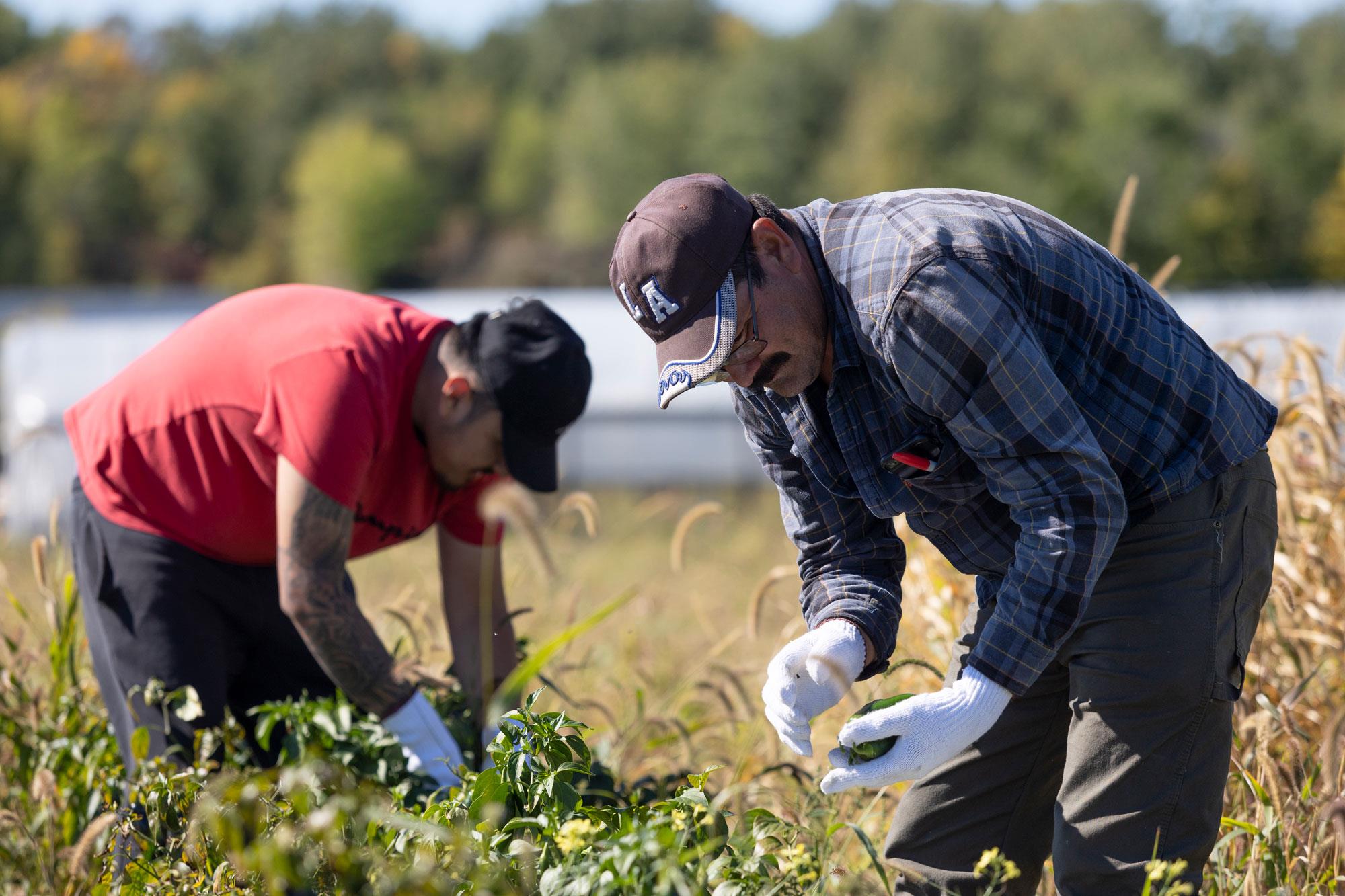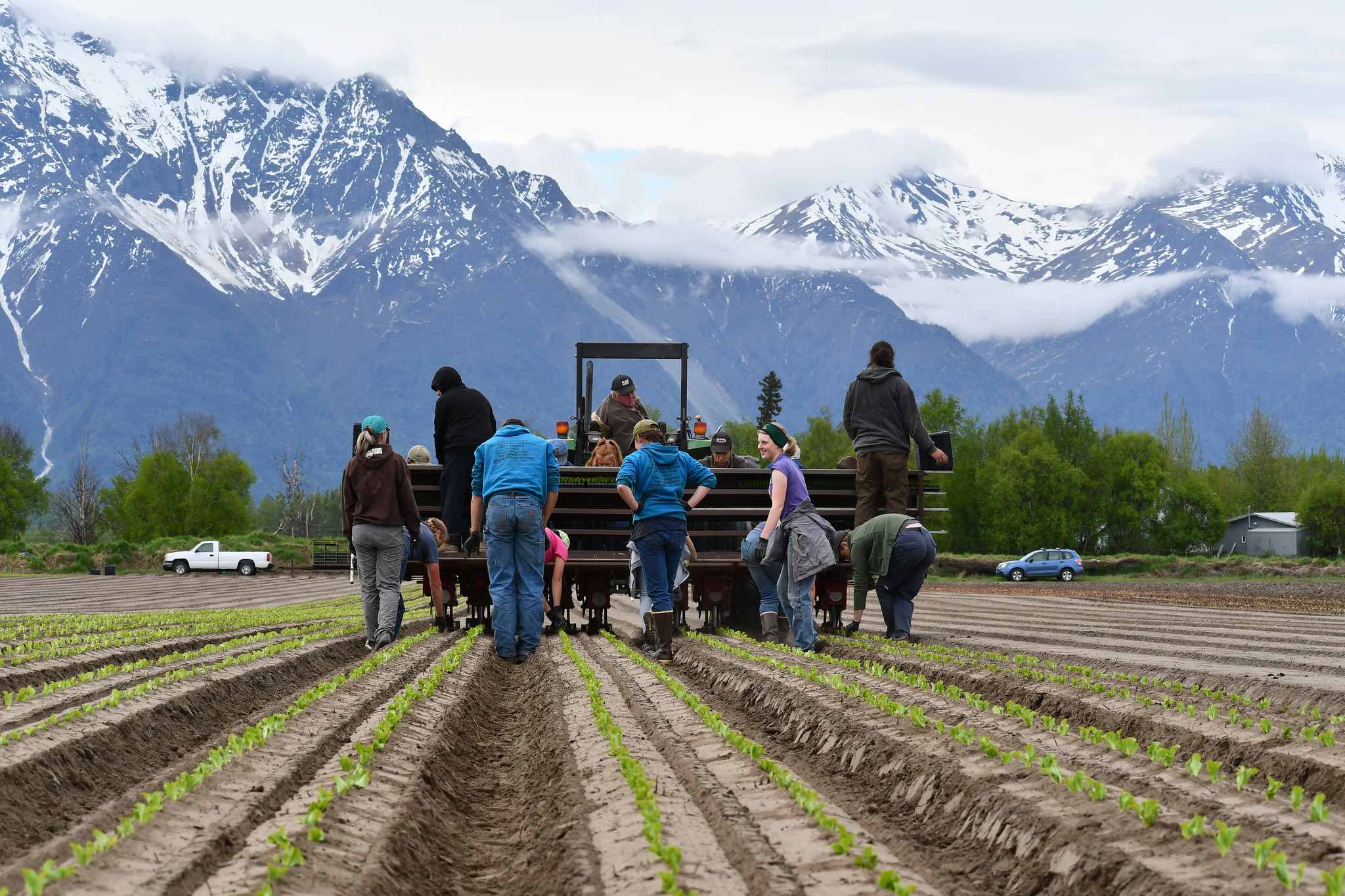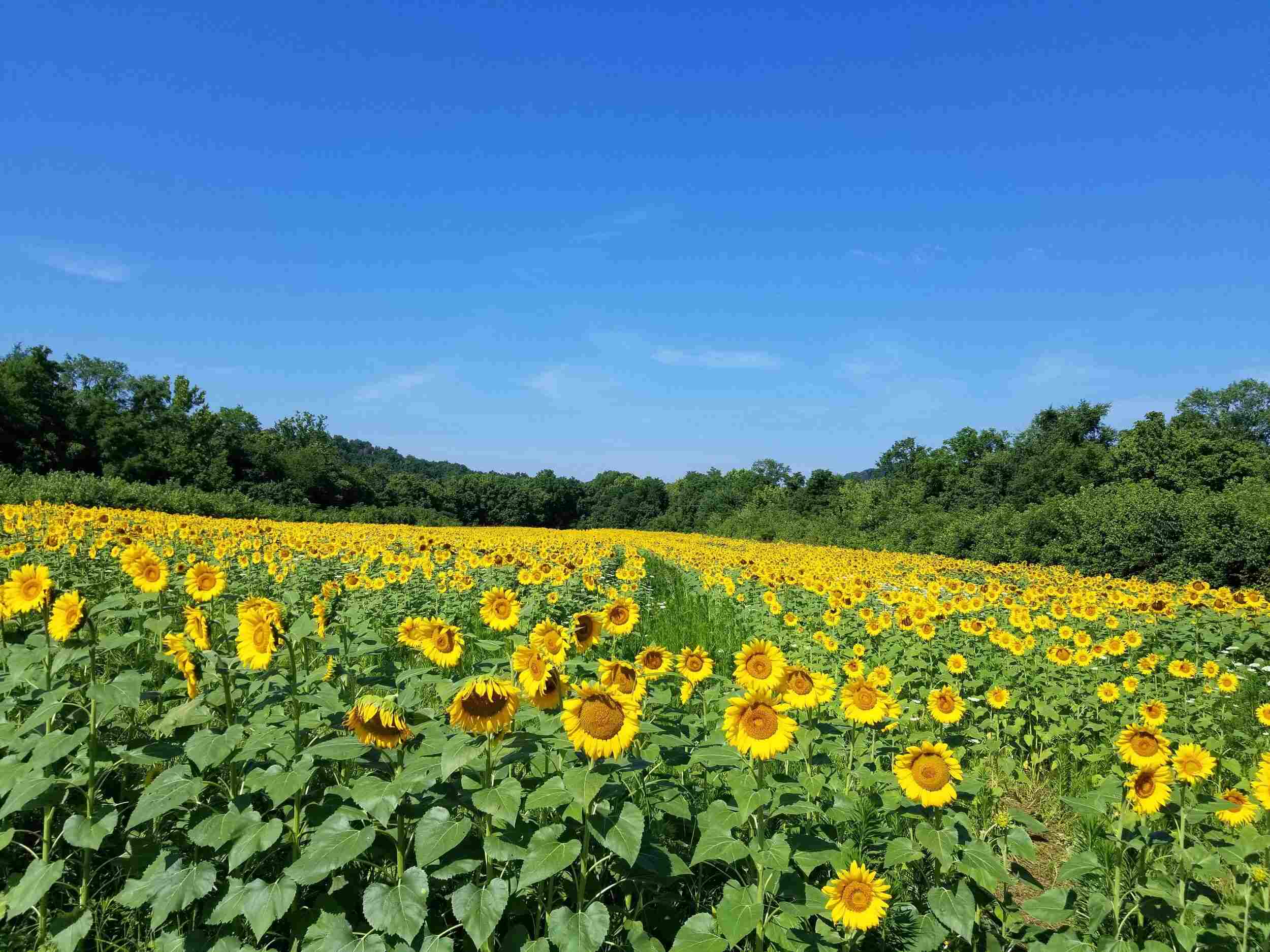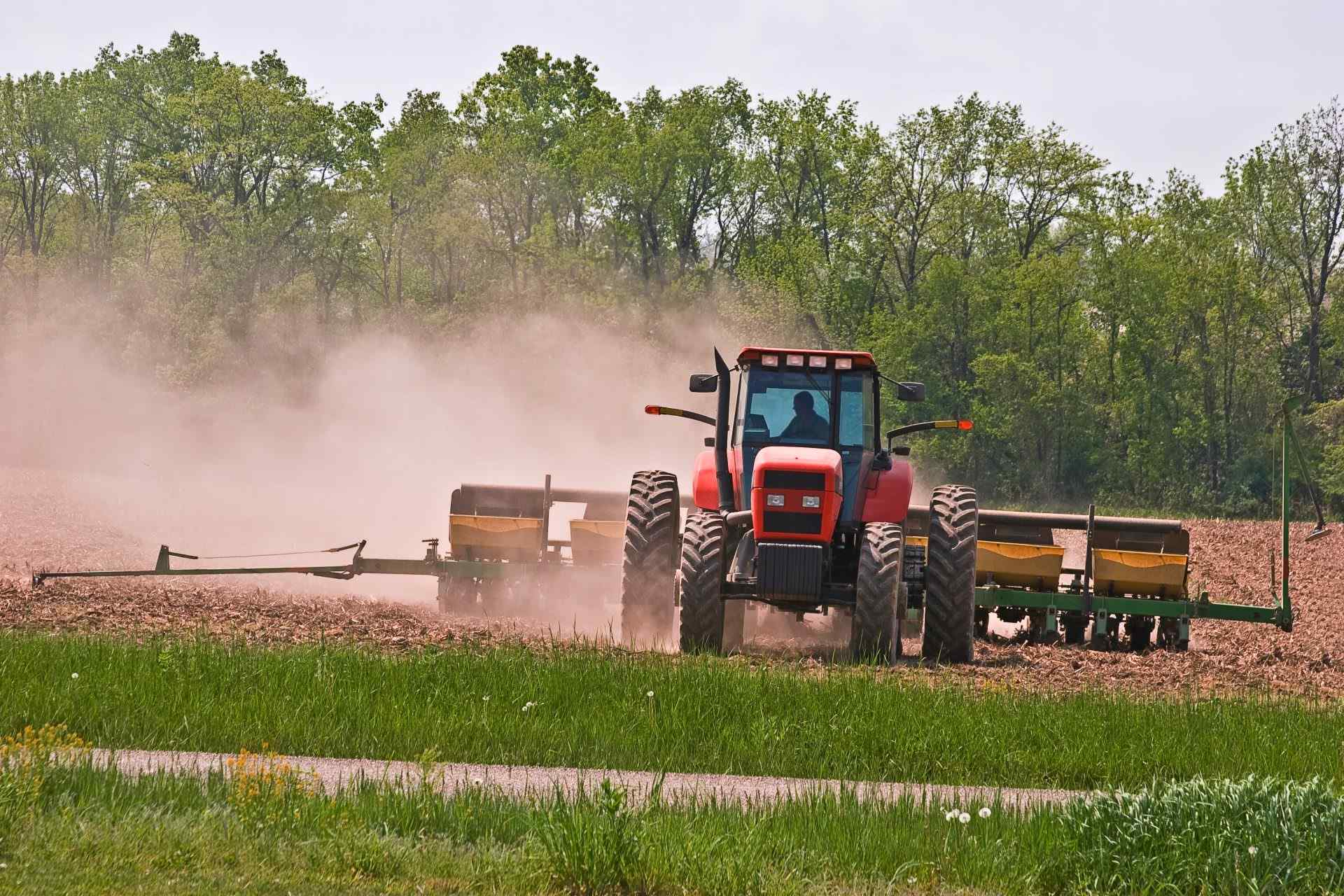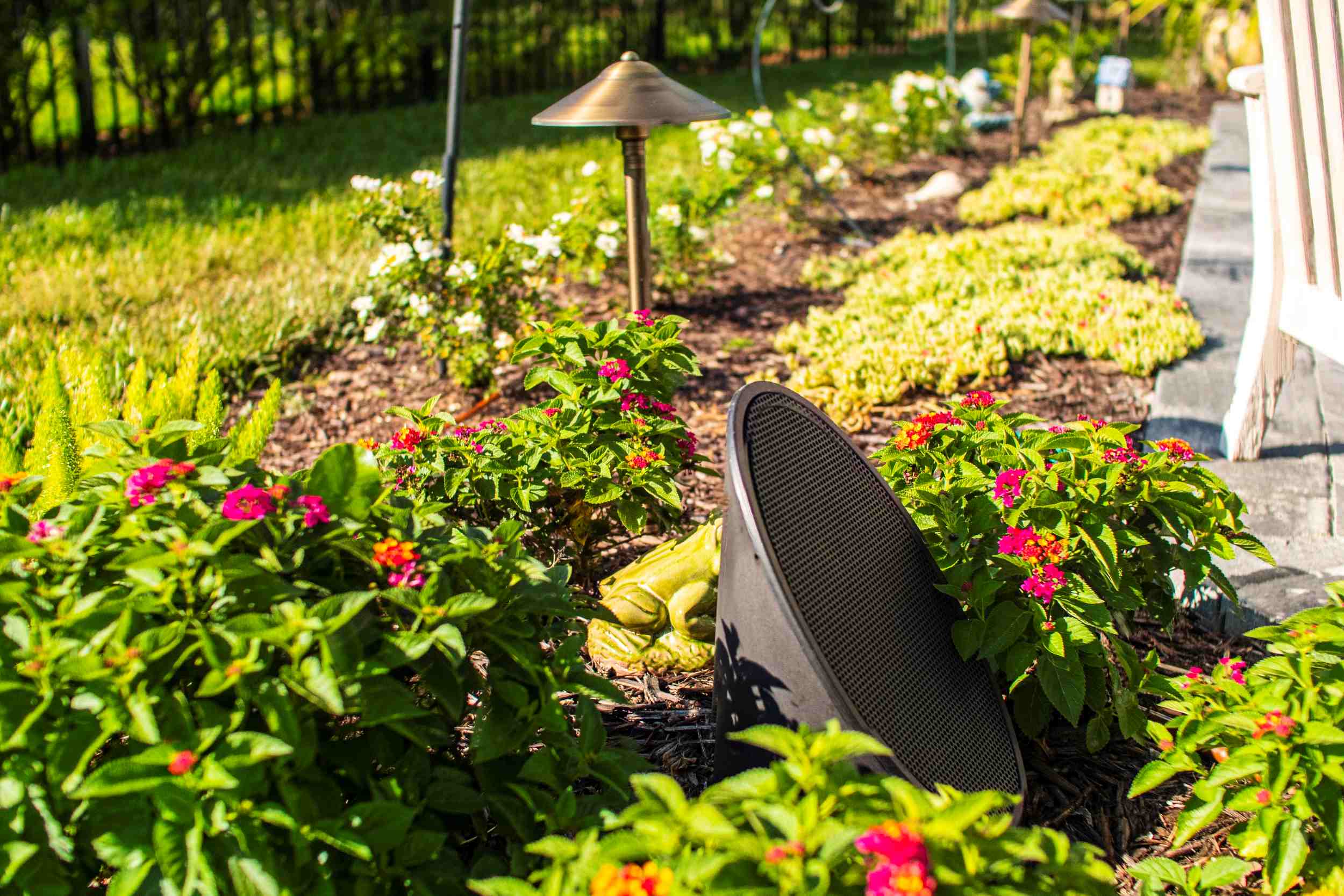Home>Gardening Basics>Understanding Soil>What Is Your Canadian Plant Hardiness Zone


Understanding Soil
What Is Your Canadian Plant Hardiness Zone
Modified: February 6, 2024
Understand the soil and determine the planting zone for Canada with our comprehensive guide. Find out which zone you're in for successful gardening.
(Many of the links in this article redirect to a specific reviewed product. Your purchase of these products through affiliate links helps to generate commission for Chicagolandgardening.com, at no extra cost. Learn more)
Table of Contents
Introduction
Welcome to the world of gardening in Canada! Whether you are an experienced gardener or just starting out, understanding the concept of planting zones is essential for successful gardening in the Great White North. Planting zones provide valuable information about the specific climatic conditions of different regions, helping gardeners determine which plants are most likely to thrive in their area.
Canada is known for its diverse climate, stretching from the chilly tundra of the north to the temperate rainforests of the west coast and the hot summers of the southern regions. This varying climate necessitates a classification system that divides the country into different planting zones based on the average minimum temperatures experienced in each zone.
In this article, we will explore how planting zones are determined in Canada and the factors that influence these zones. We will also discuss the importance of knowing your planting zone and provide guidance on how you can identify your specific zone.
Understanding your planting zone is crucial because it helps you select the right plants for your garden. Certain plants have specific temperature requirements for optimal growth, and by knowing your zone, you can ensure that you choose varieties that are adapted to your local climate.
So, whether you dream of cultivating vibrant flowers, delicious vegetables, or robust trees, read on to discover how to determine your planting zone in Canada and embark on a gardening journey that is perfect for your area.
Determining Planting Zones in Canada
Planting zones in Canada are determined based on the average annual minimum temperatures experienced in different regions. The official reference for these zones in Canada is the Plant Hardiness Zone Map, which divides the country into various zones based on specific temperature ranges.
The Plant Hardiness Zone Map is a valuable tool that helps gardeners understand the climatic conditions in their region and select plants that are most likely to thrive. It was developed by Agriculture and Agri-Food Canada, and it provides a standardized classification system that can be used across the country.
The map divides Canada into numbered zones, with the lowest numbered zones being the coldest areas and the highest numbered zones being the warmest. Each zone has a specific temperature range, which indicates the average minimum temperature that can be expected in that area.
For example, Zone 1 is the coldest zone, with average minimum temperatures below -45°C (-49°F), while Zone 9 is the warmest, with average minimum temperatures above 5°C (41°F). The Plant Hardiness Zone Map makes it easier for gardeners to understand the growing conditions in their specific area and choose plants accordingly.
It is important to note that the Plant Hardiness Zone Map is not the only factor to consider when determining planting zones. Microclimates, elevation, proximity to bodies of water, and other geographical factors can also influence the average temperatures in specific regions.
Additionally, it is crucial to keep in mind that the zone system is based on historical data and may not account for recent climate changes. As the climate evolves, the boundaries of planting zones may shift, making it essential to stay informed about local climate trends and consult updated resources.
In the next section, we will explore the Plant Hardiness Zone Map of Canada in more detail and discuss the factors that affect planting zones in the country.
Hardiness Zone Map of Canada
The Hardiness Zone Map of Canada is a valuable resource that provides a visual representation of planting zones across the country. It is based on the average annual minimum temperatures experienced in different regions, making it easier for gardeners to determine the suitability of specific plants for their area.
The map divides Canada into various zones, each identified by a number. These zones range from Zone 0 in the far north, where temperatures can dip below -50°C (-58°F), to Zone 9 in the southernmost parts of the country, where temperatures rarely drop below -1°C (30°F).
The Hardiness Zone Map can assist gardeners in understanding the unique climate of their region and selecting plants that have a higher chance of survival and successful growth. By matching the temperature requirements of plants to the average minimum temperatures of their zone, gardeners can optimize their gardening efforts and increase the likelihood of a thriving garden.
It is important to note that the Hardiness Zone Map is a general guideline and should not be the sole determining factor in plant selection. Other factors, such as local microclimates, soil conditions, and sun exposure, can also influence a plant’s ability to thrive in a specific area. Additionally, the map does not account for extreme weather events or variations in precipitation levels, which can impact plant health.
Gardeners should use the Hardiness Zone Map as a starting point and supplement it with their own observations and knowledge of their specific gardening conditions. Regular monitoring of weather patterns and consideration of local factors can further enhance the success of plantings in each zone.
It’s worth mentioning that the Hardiness Zone Map is not static and may change with updated climate data. Over time, as weather patterns shift, new versions of the map may be released to reflect these changes. It’s important for gardeners to stay informed and consult the most recent versions of the Hardiness Zone Map to ensure accurate plant selection for their area.
Now that we understand the Hardiness Zone Map of Canada, let’s delve into the factors that can affect planting zones in the next section.
Factors Affecting Planting Zones in Canada
While the Hardiness Zone Map provides a general understanding of planting zones in Canada, several factors can influence the actual conditions experienced in a specific region. Understanding these factors is essential for successful gardening and plant selection.
1. Microclimates: Microclimates refer to small-scale variations in climate within a larger region. Factors such as nearby bodies of water, elevation changes, and landscape features can create microclimates that differ from the overall zone classification. For example, a garden located near a large lake may experience milder winters compared to surrounding areas, creating a microclimate that allows for the successful cultivation of plants that would not typically thrive in that zone.
2. Sun exposure: The amount of sunlight a garden receives is crucial for plant growth and survival. Buildings, trees, and other structures can create shade patterns that may affect the microclimate of specific areas within a zone. Understanding the sun exposure in your garden is important for selecting plants that require full sun, partial shade, or full shade.
3. Soil type and quality: The composition and fertility of the soil play a significant role in plant health and growth. Different zones may exhibit variations in soil types, such as clay, loam, or sandy soil. Understanding the soil in your area and making appropriate amendments can create a better growing environment for plants.
4. Prevailing winds: Wind patterns can impact the microclimate of a garden, affecting areas exposed to strong winds differently than sheltered areas. Wind can accelerate evaporation, impacting moisture levels in the soil. It can also cause desiccation and damage to plants. Considering prevailing wind patterns when planning your garden can help you select wind-tolerant plants and provide windbreaks or barriers for sensitive plants.
5. Urban heat island effect: Urban areas can experience higher temperatures compared to surrounding rural areas due to the concentration of buildings, pavement, and human activity. This phenomenon, known as the urban heat island effect, can create warmer microclimates within a specific zone. Gardeners in urban areas need to be aware of this effect and choose plants that can withstand the higher temperatures.
6. Climate change: Climate change is a significant factor that can impact planting zones over time. As temperatures and weather patterns shift, the boundaries of planting zones may change. It’s important for gardeners to stay informed about climate trends and consult up-to-date resources to ensure accurate plant selection for their region.
Understanding these factors and their implications on planting zones is crucial for successful gardening. By considering these factors alongside the Hardiness Zone Map, gardeners can make informed decisions about plant selections and create thriving gardens that are adapted to their unique local conditions.
Suitable Plants for Different Planting Zones in Canada
Canada’s diverse climate means that different planting zones offer varying conditions for plant growth. Understanding the specific plants that are suitable for each zone is key to a successful garden. Here are some plant recommendations for different planting zones in Canada:
Zone 0: This zone is characterized by extremely cold temperatures. Few plants can thrive in this zone, but some cold-hardy options include Arctic poppies, Arctic willows, and mosses.
Zone 1: This zone experiences extremely cold winters. Suitable plants for this zone include Siberian lilies, dwarf spruce trees, and alpine asters.
Zone 2: Despite relatively cold winters, Zone 2 offers more opportunity for plant growth. Some suitable options include black-eyed Susans, columbines, and Alberta wild roses.
Zone 3: This zone features moderately cold winters. Suitable plants for this zone include peonies, delphiniums, and lavender.
Zone 4: This zone experiences cool winters but still offers a wide range of plant options. Some suitable plants include hostas, daylilies, and flowering dogwoods.
Zone 5: With mild winters, Zone 5 opens up possibilities for more delicate plants. Suitable options include roses, hydrangeas, and Japanese maples.
Zone 6: This zone offers mild winters, allowing for the growth of a wide variety of plants. Some suitable options include tulips, daffodils, and rhododendrons.
Zone 7: With mild winters and warm summers, Zone 7 is ideal for a diverse range of plants. Suitable options include ornamental grasses, clematis, and crepe myrtles.
Zone 8: This zone experiences mild winters and hot summers. Suitable plants for this zone include bougainvillea, palm trees, and hibiscus.
Zone 9: With mild winters and hot summers, Zone 9 offers an abundance of plant options. Suitable choices include citrus trees, succulents, and agapanthus.
It’s important to note that while these recommendations provide a starting point, specific growing conditions, microclimates, and other factors unique to your garden may influence the success of certain plants. Consulting with local nurseries or gardening experts can provide personalized advice for your specific planting zone.
By selecting plants that are suitable for your planting zone, you can increase the chances of a thriving garden that is well-adapted to the climatic conditions in your region.
Steps to Determine Your Planting Zone in Canada
Determining your planting zone in Canada is essential for selecting the right plants and ensuring their success in your garden. Use the following steps to identify your specific planting zone:
1. Use the Plant Hardiness Zone Map: Start by referring to the official Plant Hardiness Zone Map of Canada. This map divides the country into different zones based on average minimum temperatures. Locate your region on the map to get an initial idea of your zone.
2. Consider Microclimates: Keep in mind that the Plant Hardiness Zone Map provides a general classification. Take into account any microclimates in your specific area that may differ from the overall zone classification. For example, if you live near a large body of water, you may experience milder winters than the rest of your zone.
3. Monitor Local Weather Patterns: Pay attention to the weather conditions in your area. Keep track of the lowest winter temperatures and the duration of frost and snowfall. This will help you gauge the actual conditions experienced in your region and compare them to the information provided by the planting zone map.
4. Consult Local Gardening Resources: Local gardening resources, such as gardening associations, extension offices, or experienced gardeners in your community, can provide valuable insights into the specific conditions and plant selections for your area. They may have region-specific recommendations that can help you narrow down your planting zone.
5. Seek the Advice of Experts: If you have specific concerns or questions about your planting zone, consider consulting with gardening experts or professionals. They can provide personalized advice based on their knowledge and experience, taking into account your specific location and circumstances.
6. Experiment and Observe: Once you have determined your general planting zone, don’t be afraid to try out different plants and observe their performance in your garden. Gardening is a learning process, and experimenting with different varieties will help you fine-tune your plant selections and better understand the unique conditions of your specific area.
By following these steps, you can determine your planting zone in Canada and make informed decisions about the plants that are most likely to thrive in your garden. Remember, understanding your specific planting zone is crucial for creating a flourishing and sustainable garden.
Importance of Knowing Your Planting Zone
Knowing your planting zone is crucial for successful gardening and ensuring the health and vitality of your plants. Here are several reasons why understanding your planting zone is important:
1. Selecting Suitable Plants: Each planting zone has unique climatic conditions, such as temperature ranges and frost dates. By knowing your zone, you can select plants that are specifically adapted to thrive in those conditions. Choosing plants that are well-suited to your zone increases their chances of survival and successful growth.
2. Maximizing Plant Health: Plants that are well-matched to their planting zone have a greater ability to withstand harsh weather conditions and natural stressors. By selecting plants that can tolerate the temperature extremes and precipitation levels of your zone, you can help maximize their overall health and resilience.
3. Optimizing Growing Conditions: Understanding your planting zone allows you to optimize the growing conditions in your garden. You can make informed decisions on factors such as soil amendments, watering schedules, and sunlight exposure, ensuring that your plants receive the ideal conditions for their growth and development.
4. Time and Cost Efficiency: By choosing plants that are well-suited to your planting zone, you can minimize the risk of plant failure and the need for replanting. This saves you time, effort, and money. Additionally, plants that are adapted to your area are likely to require fewer resources, such as water and fertilizers, reducing your overall gardening expenses.
5. Preservation of Native Species: Knowing your planting zone can help you prioritize the use of native plant species that are naturally adapted to your local climate. Native plants often require less maintenance and provide important habitat and food sources for native wildlife. By incorporating native plants into your garden, you can contribute to the preservation of local ecosystems.
6. Climate Change Considerations: As climate change continues to impact our planet, understanding your planting zone becomes even more critical. The boundaries of planting zones may shift over time as temperatures and weather patterns change. By staying informed about your current zone and any shifts that may occur, you can adapt your gardening practices and select plants that are resilient to the evolving conditions.
Knowing your planting zone is the foundation for successful gardening. By selecting suitable plants, optimizing growing conditions, and adapting to changing climates, you can create a garden that thrives in harmony with your specific geographic area. So, take the time to determine your planting zone and embark on a gardening journey that is tailored to your unique environment.
Conclusion
Understanding your planting zone is an essential aspect of successful gardening in Canada. By knowing your specific zone, you can select plants that are suited to your local climate, optimize growing conditions, and increase the overall health and vitality of your garden.
The Plant Hardiness Zone Map of Canada provides a valuable tool for determining your planting zone based on average minimum temperatures. However, it’s important to consider other factors that can influence local conditions, such as microclimates, sun exposure, soil type, prevailing winds, and the urban heat island effect.
By following the steps outlined in this article, you can accurately determine your planting zone and make informed decisions about which plants are most likely to thrive in your area. This knowledge allows you to select suitable plants, maximize their health, and create a garden that flourishes in harmony with your local climate.
Moreover, knowing your planting zone is important in the context of climate change. As our climate continues to evolve, understanding the shifting boundaries of planting zones can help you adapt your gardening practices and select plants that are resilient to the changing conditions.
So, whether you dream of a lush flower garden, a bountiful vegetable plot, or a serene landscape, knowing your planting zone sets the foundation for a successful and fulfilling gardening experience. Embrace the diversity of Canada’s climate, consult local resources, and embark on a gardening journey that harmonizes beautifully with your unique surroundings.

